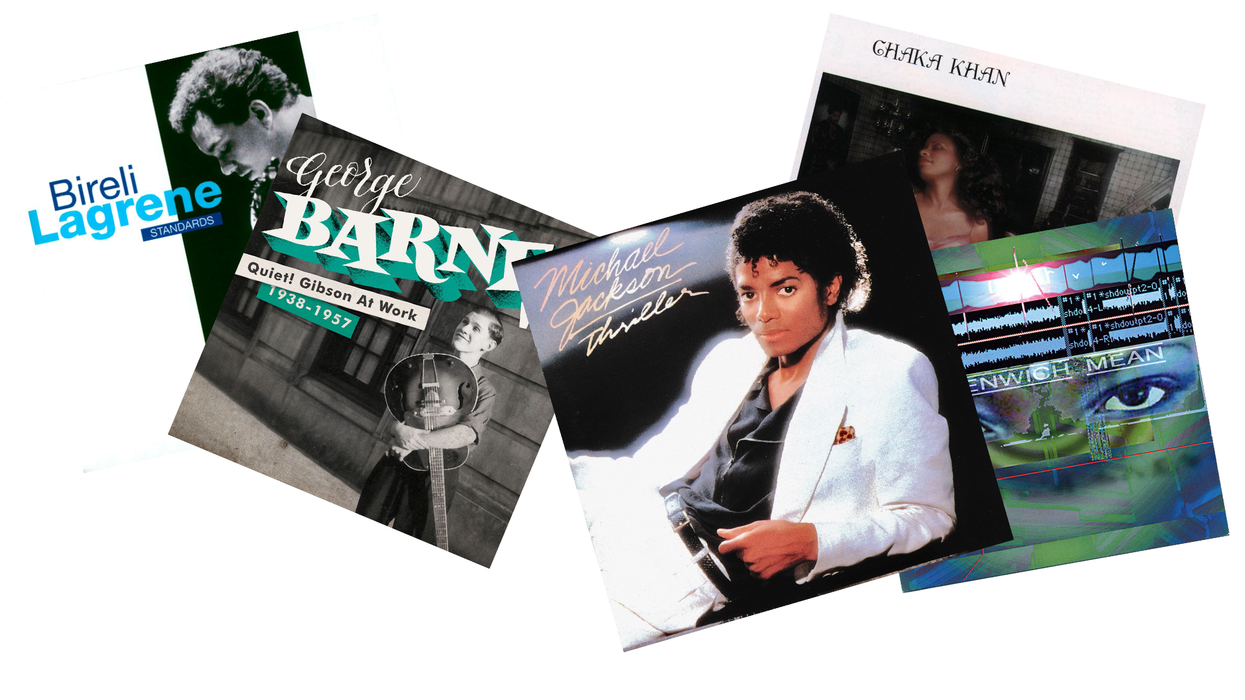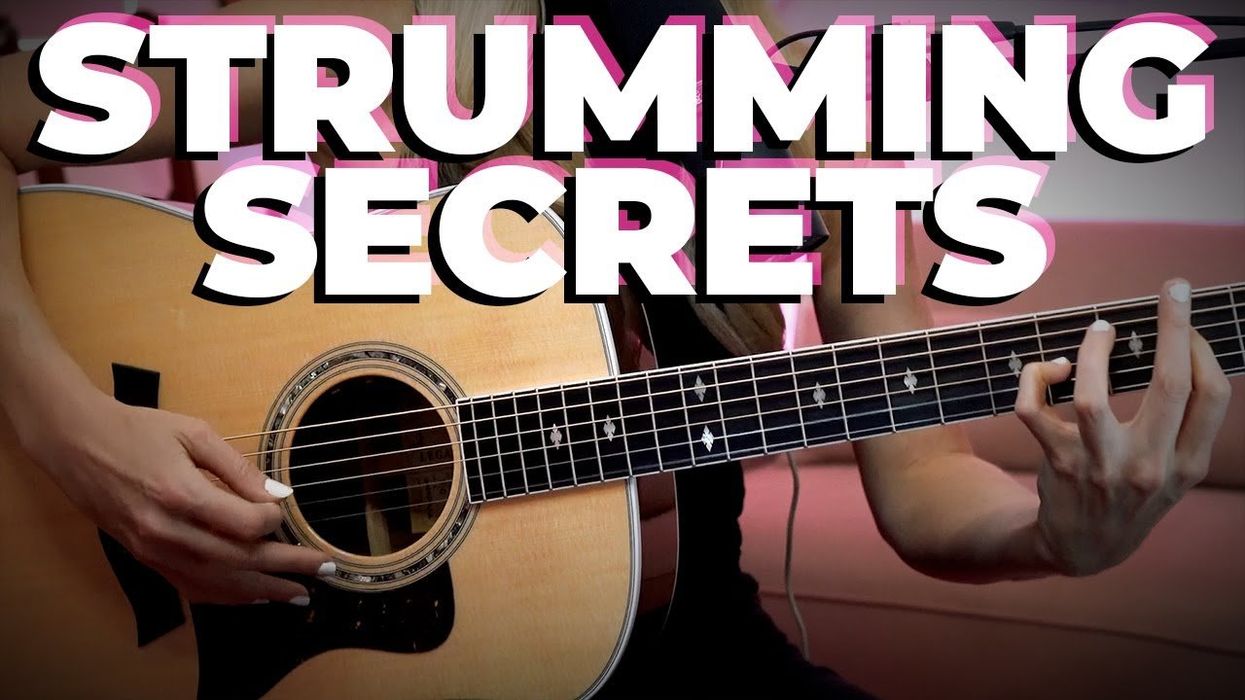Suspended chords have a unique sound and play an important role in a variety of styles of music. A quick internet search will give you the basic theory, but few articles help you actually apply these ambiguous sounds. You see, these chords are neither major nor minor, so where do they fit in? Let’s find out.
What Is a Sus Chord?
Suspended chords are notated in shorthand with “sus,” and there are two types: a sus4, and a sus2. If you see a chord symbol that just says “Csus,” the implication is that the chord is a sus4. Starting with a basic C major triad (C–E–G) we simply move the 3 up a half step to the 4 of the scale (in this case, F). You end up with C–F–G, which is shown in Ex. 1. A word to the wise: Break down your major chord shapes and locate the 3. That is the note you need to move up one fret to turn it into a sus4 shape.

Suspended chords are typically the dominant chord in a key, also called the V chord. A Vsus4 chord creates musical tension and a sense of ambiguity. It will typically resolve back to the V chord and then resolve to the I chord. Look at Ex. 2 to see how this tension-release resolution sounds, and how it works on the guitar.

Dominant 7 chords can also be suspended as well. The process is the same, so your dominant 7 chord goes from 1–3–5–b7 to a 7sus4, which is spelled 1–4–5–b7. Ex. 3 shows some common C7sus4 to C7 voicings. You can find these dominant 7 suspended sounds in multiple styles and sub-styles of jazz, funk, and disco. Take a look at Ex. 4 to see some three-note voicings that are found in those styles.


Let’s continue with the C7sus4 sound, building it in a couple of different ways. The first is what is called a “polychord” (or sometimes a “change-bass” chord). If you play a Bb major triad over a C bass note, you have effectively built a chord that functions as C7sus4. It could be labeled as Bb/C and spelled C–Bb–D–F. This voicing is a very common sub for a traditional 7sus4 chord and has three of the four notes needed to create that sound. There’s no 5, but that’s ok. The 5 is a throwaway note when it’s not altered. The second way is to play a voicing that keeps the 3 and 4 but still sacrifices the 5, providing some interesting musical tension. Each of these voicings are seen in Ex. 5.

So, how do you play over a suspended chord?
Since a suspended chord functions as the V chord in a key, you would use the Mixolydian mode to play over that sound. Be careful to stay away from really bluesy guitar licks or running up and down the scale. Stick to sequences, patterns, or other structures, and listen to Ex. 6 for some possibilities.
The next couple of approaches use the Bb/C chord structure as inspiration. Remember that C7sus4 is the V chord in the key of F, and Bb is the IV chord in that key. Use that pair of triads to create your melodies since you have Bb–D–F and C–E–G at your disposal. If you line those notes up as a scale, you get C–D–E–F–G–Bb, which is just one note shy of the C Mixolydian mode. The difference is that you are organizing the notes in triads as opposed to a scale. Take a listen to Ex. 7 as one possibility on how to break up the triads while creating a solo.
Next, focus your solo on just the sound of the IV chord, or Bbmaj7. Experiment with limiting yourself to just the notes of the chord, Bb–D–F–A, and hear how they sound like the b7, 9, 11, and 13 of C7sus4. You can also loosen it up a bit, emphasizing those four notes while using some other scale tones, as heard in Ex. 8.
Last, but definitely not least, is to use the minor pentatonic that is a fifth above the root of your suspended chord. For C7sus4, you would play the G minor pentatonic scale, where G–Bb–C–D–F become the 5–b7–1–9–11 of the C7sus4 chord. This approach works really well since you have all the notes of your suspended chord, and the 9th for some added flavor. Again, blues licks probably won’t sound like you think. Try them out anyway just to hear that they don’t fit very well over a suspended sound. Take a listen to Ex. 9 for some non-blues pentatonic ideas.
Suspended chords have an open, undefined sound to them. They are neither major nor minor and need a slightly different approach when soloing to make it sound right. There are plenty of resources on triad pairs, pentatonic patterns, and hexatonic scales to keep you busy. Start with one approach and keep it simple.


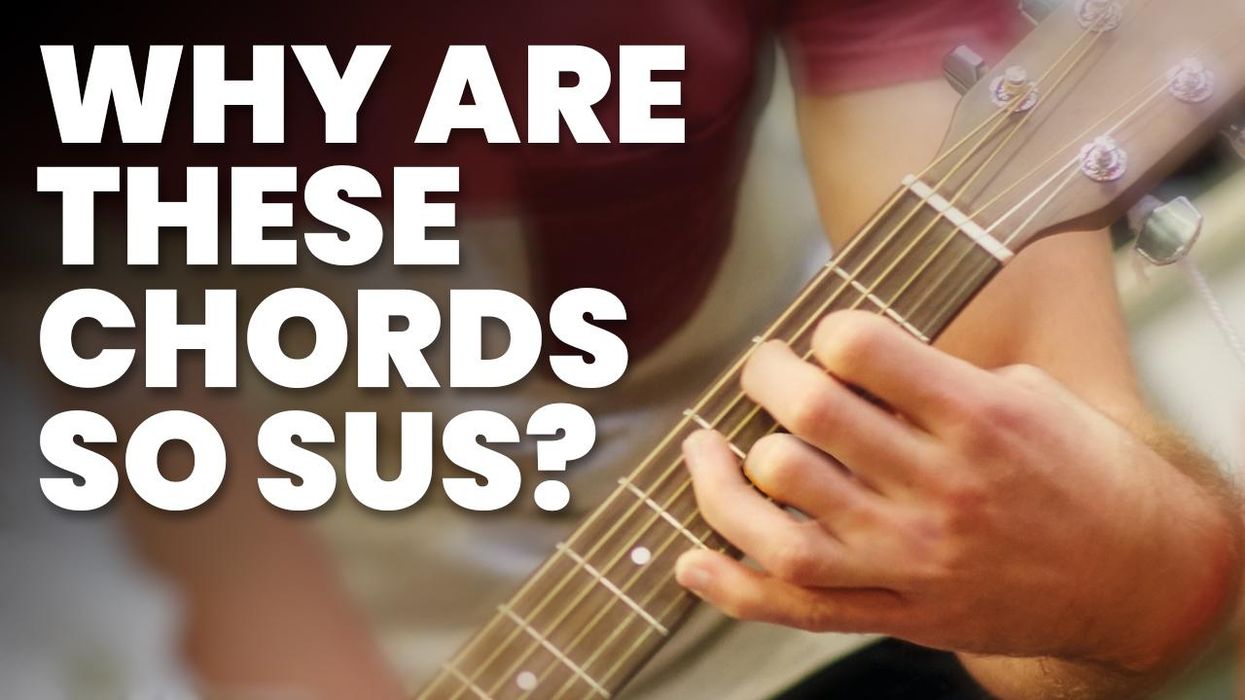

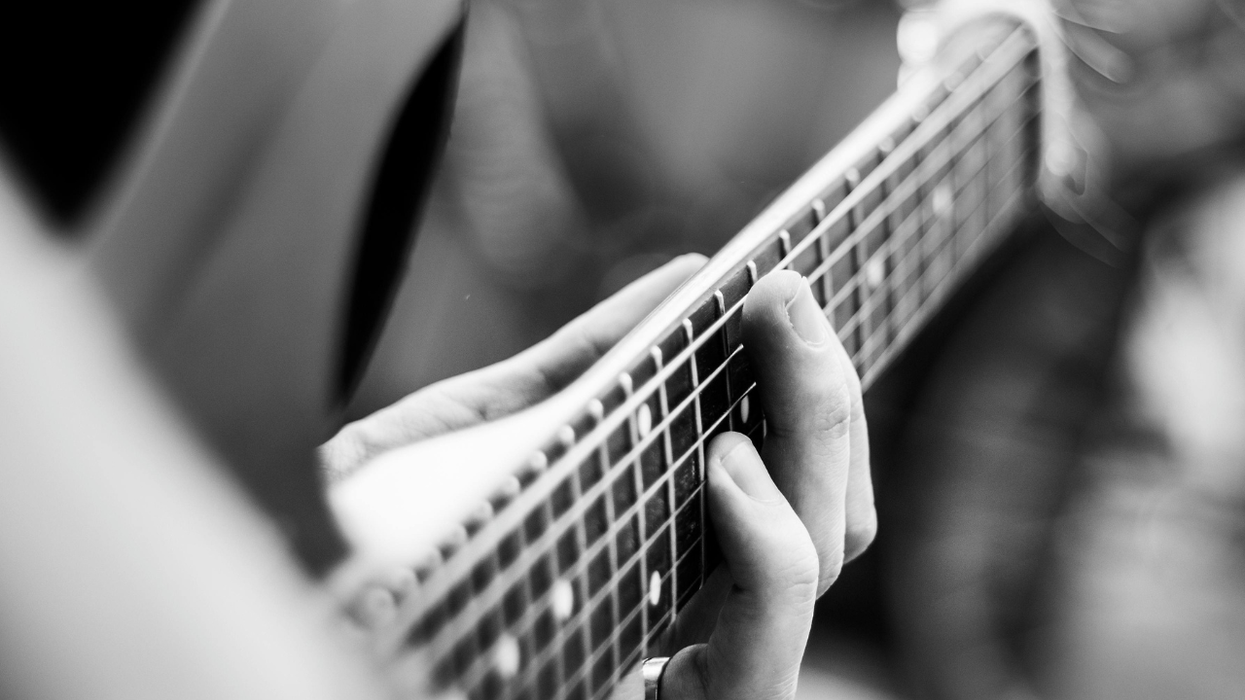
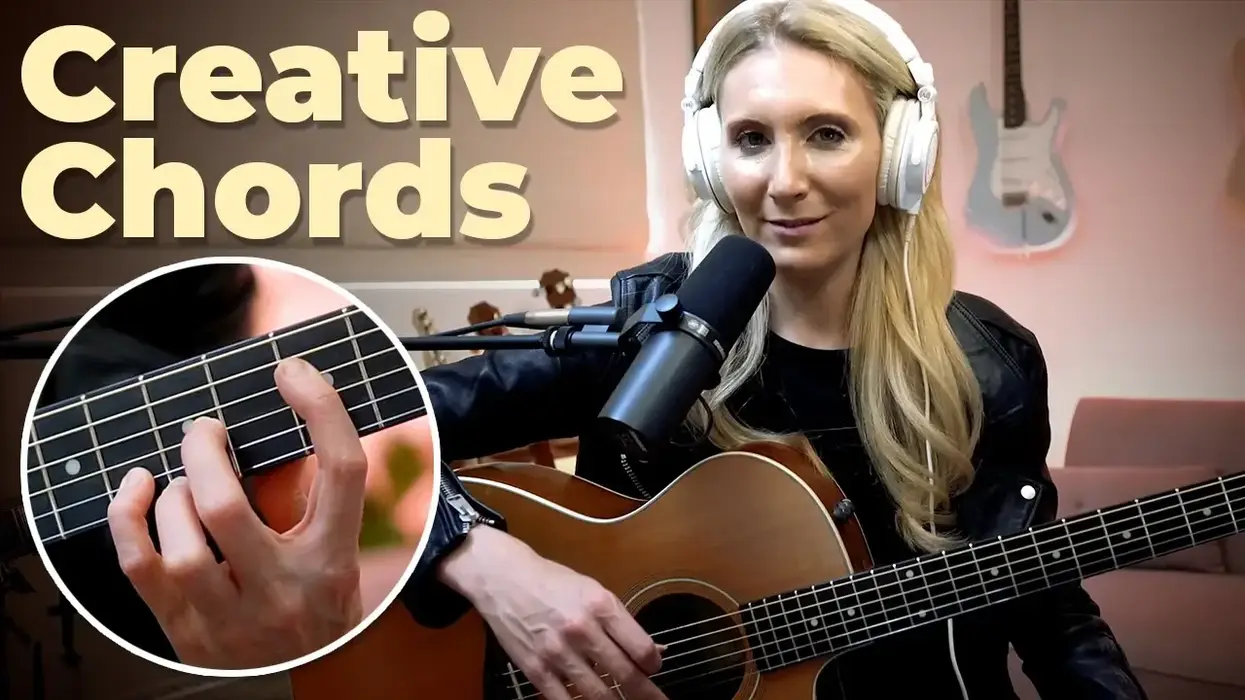
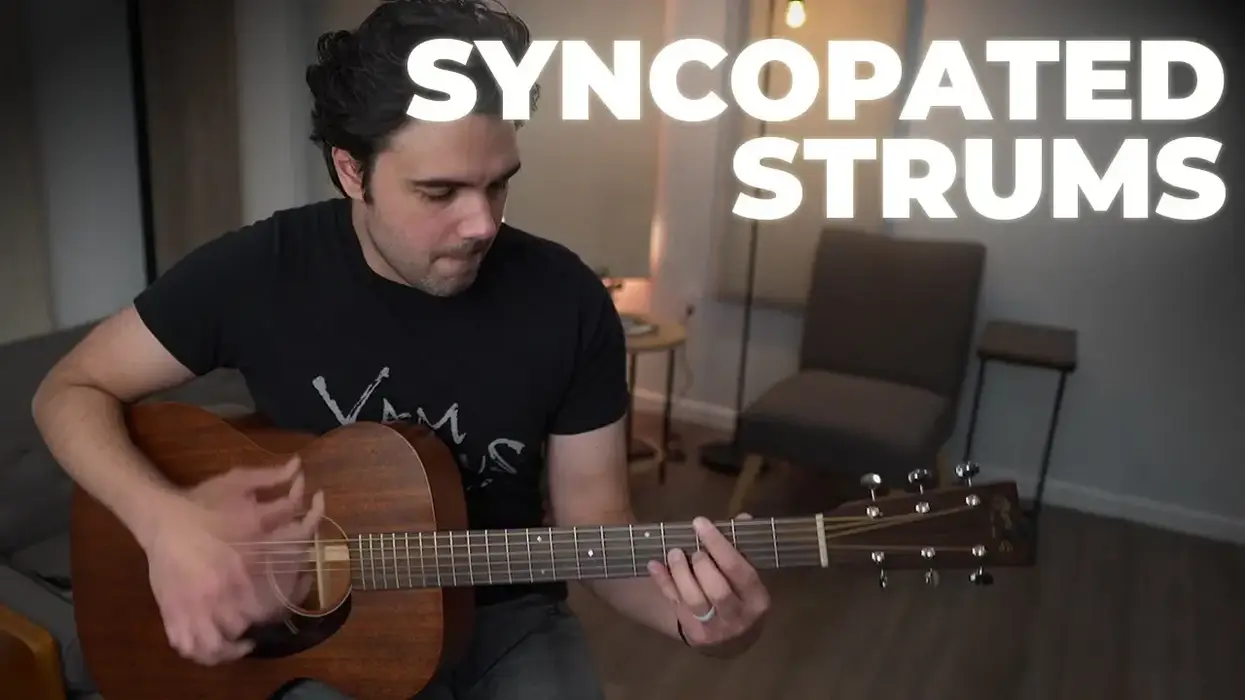






![Rig Rundown: Russian Circles’ Mike Sullivan [2025]](https://www.premierguitar.com/media-library/youtube.jpg?id=62303631&width=1245&height=700&quality=70&coordinates=0%2C0%2C0%2C0)




